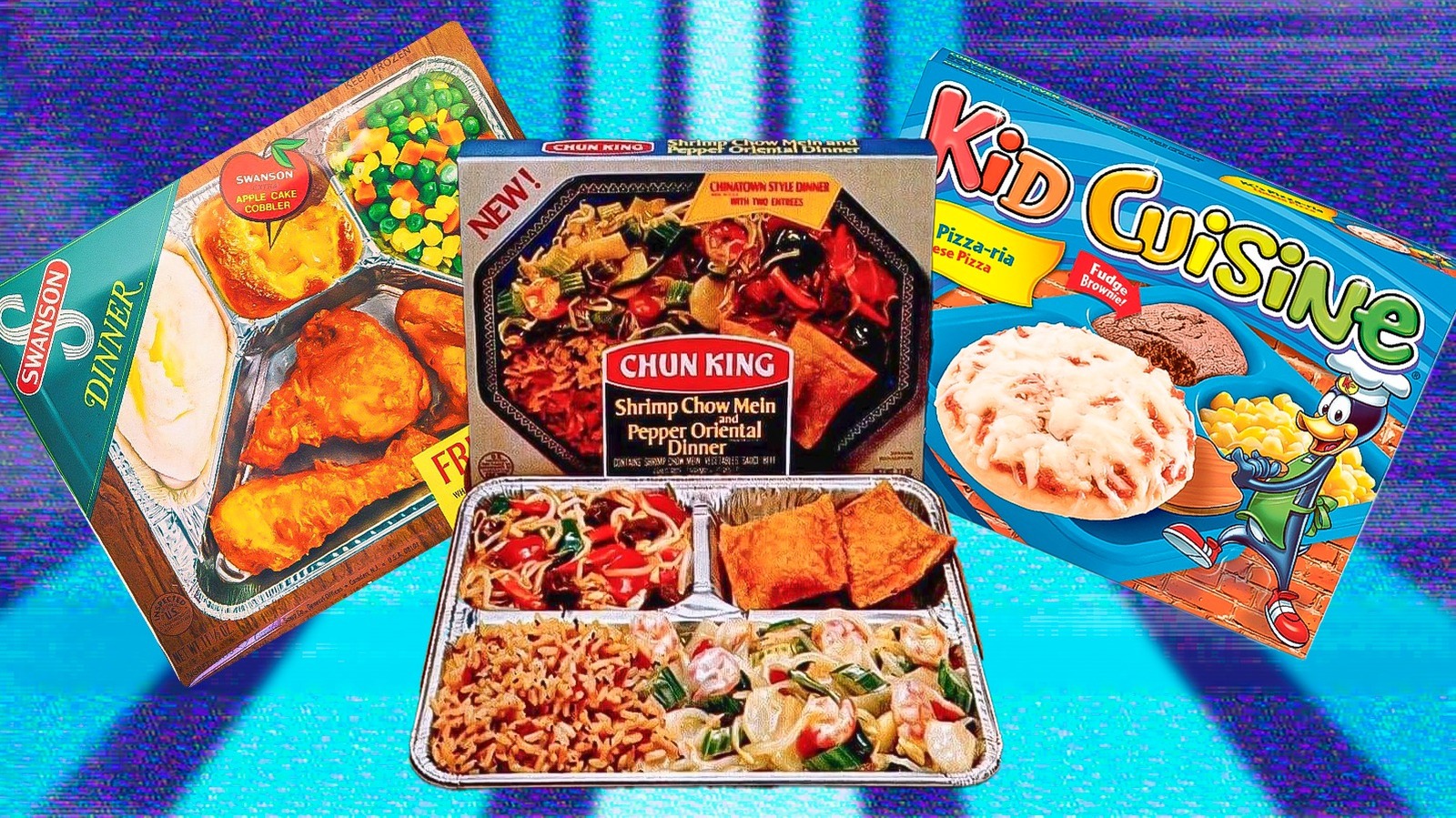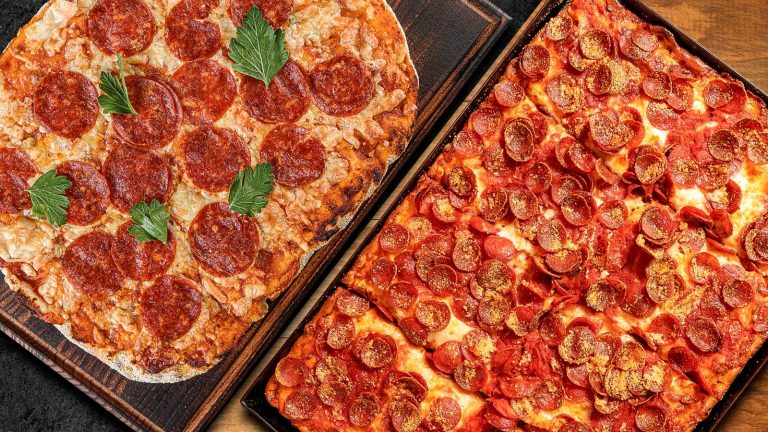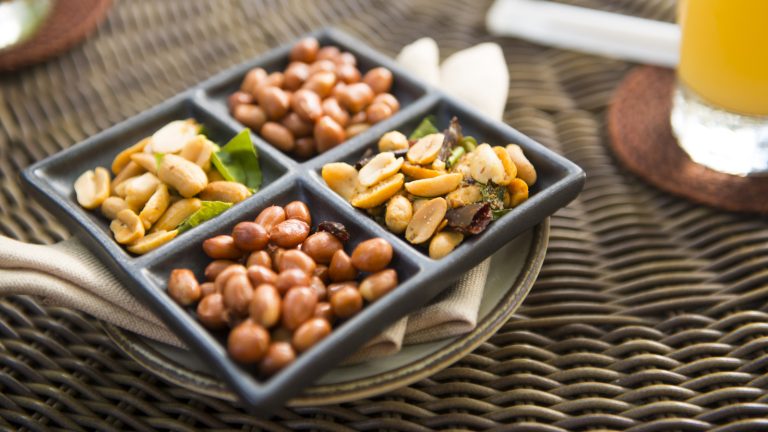Frozen dinners have long graced (or littered, depending on what you think of them) tables and TV trays in U.S. homes, and sometimes it seems like the brands you buy now have been around forever. But the frozen-food industry is competitive, and several brands have entered the market and dropped out over the years. Yet other brands really are still around after all these decades, but some of the specific dinners the brands used to sell are long gone. This is a shame because a few of these brands and meals were either so innovative or delicious — or so weird — that not being able to try them now is a disappointment.
Frozen dinners themselves may have first been invented in 1945 when a company named Maxson Food Systems tried to sell frozen meals to airlines. However, the Swanson company was likely the first to use freezing technology to sell convenience meals for use at home. Someone at the company had ordered too much turkey for Thanksgiving in 1953, and the employees couldn’t let that food (and spent money) go to waste. By 1954, Swanson started distributing frozen meals to stores, and the meals were a hit. Since then, Swanson and its competitors have produced everything from comfort food to healthy entrees to international cuisines, often dropping one product to focus on others. While it’s understandable why a company might discontinue a floundering brand or product, we still wish we could give these nine old-school dinners a try.
Static Media owns and operates the Daily Meal and Chowhound.
Libbyland Adventure Dinners
First on this list is something that looks like an early 1970s version of Kid Cuisine: the Libbyland Adventure frozen dinners. Produced by Libby’s, the company also known for its canned food, the dinners came in themed boxes such as a Sea Diver’s dinner with fish sticks. Other versions included the Safari supper that included a puzzle, a Pirate picnic, a Goldstrike supper, and so on.
The dinners didn’t last long; they were available only from 1971 to 1976. But they were so popular that even now, five decades later, people remember eating them, and surprisingly, they weren’t that bland. They were definitely what you’d consider kid food, with some varieties including food like an alphabet-pasta version of pasta and meatballs or fries, but the combinations were original. Supposedly, the dinners came back in the late 1980s for a few years, but there isn’t much information available about that run.
Swanson fried chicken with apple cobbler
When people think of older Swanson TV dinners, they think of the classic turkey dinner that was the brainchild of the employees who ordered way too much turkey for Thanksgiving in 1953. But the one we wish we could try wasn’t available for a few more years. This was the fried chicken dinner that included dessert, but not just any dessert; this one had an apple cobbler that was so hot and gooey that, if online comments are anything to go by, it could compete with McDonald’s original fried apple pies. That dinner was available at least through the 1980s.
Swanson TV dinners did not originally include sweet dishes, but in 1960, the company remodeled its trays to allow for a small dessert to be included. Apple cobbler, cherry cobbler, brownies, and sliced apples and peaches were all among the options available at one point or another. Swanson originally wanted to market a separate frozen fruit dessert but ended up merging that product with the TV dinners to avoid forcing customers to deal with differences in cooking times and temperatures for two different products.
The Morton Twinkie Supper
Morton was a well-established frozen foods company that developed what was probably one of the strangest TV dinners in existence: the Morton Twinkie Supper. There were at least a couple of versions of this; one had spaghetti and meatballs, and the other included a “beef pattie.” The beef pattie (spelled with that “ie” instead of a “y”) was just a burger; there’s no explanation why the company chose to call it a beef pattie. The dinners included a side of veggies along with a couple of other foods, but they were most notable for the wrapped Twinkie that sat in one compartment of the tray.
The Morton company started as a chicken farm in the 1930s but soon moved into frozen foods. Unfortunately, the company was bought by ConAgra in the 1990s, and ConAgra eventually shuttered Morton Frozen Foods around 2000 in the name of streamlining. However, it turns out that there are a lot of people who have wanted Morton to come back, and in the mid-2010s, one group took action. The group planned to contact ConAgra to get Morton back into production, either through ConAgra itself or as a result of selling the name to another company. ConAgra apparently agreed as there was a test done with chicken pot pie; it was sold at Walmart in 2017. Unfortunately, that test failed. It’s unclear how many other products were tested, but ConAgra’s website currently doesn’t list Morton as an available brand.
Swanson Entrees from the 1980s
Swanson’s back on the list, this time with a couple of lines of smaller meals labeled as “Entrees.” These were around for at least the 1970s and 1980s, and some commercials and ads are available here and there. However, both lines seem to have faded into near obscurity.
One line was for “homestyle” entrees, which had something like lasagna or chicken cacciatore in a bowl or deep tray. Commercials featured a spokesman introducing the meal to an actor portraying a customer in a market. The other type of entree was a smaller version of some of the company’s other meals. For example, Swanson had a Salisbury steak dinner with the steak in sauce, plus sides of mashed potatoes, corn, and a brownie. But it also created an entree version that had a plain Salisbury steak with one side of tater tots. The fried chicken dinner had an entree counterpart with the chicken and potatoes only. Yet another style of entree was fish and chips; you get the idea. These smaller meals would have been great for people who didn’t want a full meal or those who were just looking for pure comfort food without peas and corn.
Kid Cuisine Pizza Painter meals
Kid Cuisine is still around, but one particular dinner — the one we wish we could try — isn’t. In the mid-2000s, the company produced meals in which you could use a packet of pizza sauce to “paint” designs on top of a small cheese pizza. The food itself wasn’t unusual; you had your average TV dinner meant for kids with pizza, some vegetables or fruit, and a dessert. But the idea of letting kids decorate their pizza with a squeeze packet of sauce was a new one and one that no doubt made mealtimes more interesting. Or, we can imagine, much messier if you had warring siblings at the table.
This wasn’t the first meal that Kid Cuisine had that included some sort of activity. The company also had a version of the pizza painter where you could use what looked like a ketchup packet to decorate chicken nuggets, as well as another dinner where you could play tic-tac-toe with cookies decorated with X’s and O’s. Nowadays, the food in the meals is no longer a source of entertainment; the company instead has kids scan QR codes on the meals’ packaging to play games.
Swanson International dinners
Let’s head back to the Swanson family of frozen dinners for a look at the company’s foray into more “international” flavors. The 1960s saw a number of changes regarding what U.S. diners wanted to eat, and one of the changes was that more people became interested in ethnic cuisine. While the changes today may not look that huge, remember that it was only in 1961 that Julia Child’s “Mastering the Art of French Cooking” was first published in an attempt to help home cooks in the U.S. try making French food. Eating anything outside the realm of what was considered “American” food back then was unusual for a large portion of the country, even though ethnic restaurants did exist (and, as you’ll see in the next couple of sections, Mexican and Chinese frozen foods were already popular). But in the 1960s, mainstream American dinner was ready for more.
Swanson joined this trend in the 1960s by releasing a line of frozen dinners that focused on specific cuisines, although the cuisines themselves were heavily generalized. The Italian dinner, for example, had lasagna. One interesting thing about the line was that it contained dinners you don’t really find in the freezer case now, such as a German-style dinner with sauerbraten, which is a marinated roast beef dish, and spaetzle, a type of egg pasta. The dinners were available until around the 1980s.
Chun King frozen dinners
Kids of the 1960s, 1970s, and 1980s may remember frozen food from Chun King as those boxes filled with small, rectangular egg rolls. But Chun King also had frozen dinners as far back as the 1950s. The company was founded by Jeno Paulucci, who began canning Chinese-American food in the 1940s after returning from serving in World War II. The company expanded into frozen foods quickly, creating foil trays with chicken chow mein and other Chinese-American dishes that the company’s ads said were based on Cantonese recipes.
Chun King was highly successful, and in the mid-1960s, Paulucci sold the company. Chun King went through a series of owners including R.J. Reynolds Tobacco, Nabisco, Del Monte, and Hunt-Wesson, which owned competitor La Choy and was itself owned by ConAgra. Distribution of the Chun King line of foods gradually dwindled; in 2002, it was available only in the Pacific Northwest. Chun King was finally discontinued in the early 2000s.
Rosarita frozen dinners
The Rosarita brand of Mexican food is still around, and you’ve likely seen its canned goods on grocery store shelves. But back in the 1950s, the company jumped on the frozen-dinner train quickly and sold convenience meals until at least the early 1980s. The company had a few options, most notably an enchilada dinner and a “Mexican style dinner” that included a tamale. Both came with refried beans, Spanish rice, and a good amount of shredded cheese. Some ads touted the food as having a good balance of spice and flavor, avoiding the extremes of being too spicy or bland, while others were open about the food being made to “American” tastes.
The Rosarita brand was based on a real person; her name was actually Rosaura, and she co-founded the company with her husband, Pedro Guerrero. The couple lived in Mesa, Arizona, and while the story goes that Rosaura couldn’t cook anything when she got married, she quickly learned how to make some of the best food in the area. Pedro noticed that Mexican food stands were doing excellent business at a festival, which gave him the idea to set up a stand with Rosaura’s food at the next festival. They sold out, and while it took another couple of decades for the family to get the money to start a commercial food business (not to mention a name change from the original “Rosita” to “Rosarita”), the company eventually flourished.
Colgate frozen entrees
Colgate frozen dinners are controversial because the one that everyone thinks of is likely a fake. However, Colgate did test convenience meals about 20 years before the infamous “Beef Lasagna” made its appearance.
First, what’s apparently true: Colgate tested meals in Wisconsin in 1964 and 1965. An article about Colgate in a November 1966 issue of “Television Age” magazine mentioned that the company had created a Colgate Kitchen line of meals with dried chicken and crabmeat that were swiftly abandoned. Another 1966 publication, from the American Institute of Food Distribution, reportedly also mentioned where these meals were tested.
What’s most likely not true: Colgate released frozen entrees in the 1980s. In 2017, a Swedish exhibition called the Museum of Failure displayed failed products, one of which was a box for a frozen meal labeled “Colgate Beef Lasagna.” Media outlets had surprised little blurbs about this supposed failure, and the picture on the box looked rather unappetizing. But if you look at the Museum of Failure’s website, the description notes that the box is a mock-up — it’s not real — and also says that Colgate’s meals had only two variations, one with dried chicken and one with crab meat. Wait a minute; those sound like the meals from the 1960s.
Colgate itself denies releasing frozen meals in the 1980s, although the man who put together the Museum of Failure exhibit claims the company is just embarrassed, and the box mock-up was based on supposedly knowledgeable online sources.





